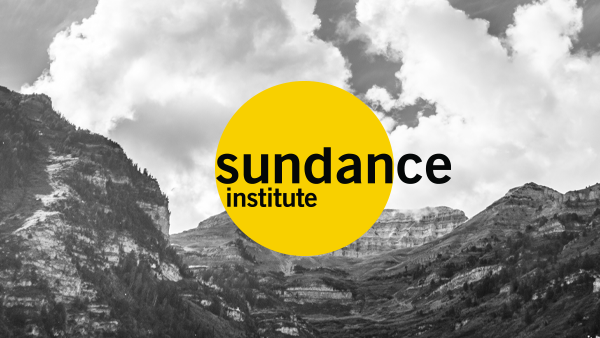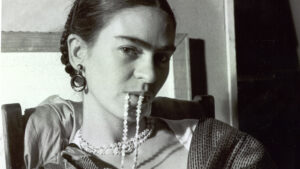Sundance Institute
Sundance.org is dispatching its writers to daily screenings and events to capture the 10 days of festivities during the Sundance Film Festival in Park City, Utah. Check back each morning for round-ups from the previous day’s events.
2013 Sundance Film Festival Shorts Awards Ceremony
By Eric Hynes

It’s one of the Festival’s better traditions. While high-profile films are still premiering in town, and millions of dollars are being traded for the theatrical rights to the hottest films in the Festival, the Shorts Awards pump some irreverent fun into the proceedings. Annually hosted at the Jupiter Bowl, a snazzy 12-lane bowling alley at Redstone Square, it’s the lowest key, least pretentious awards ceremony imaginable. Pizza was served, beer was proffered, and there were bowling shoes for every pair of feet. When Director of Programming Trevor Groth started the show, he stood at a podium on a makeshift dais in the middle of the alleys while multicolored lights flashed and swirled against the wall behind him. First order of business? Tell the Festival’s finest to kindly cease bowling.
Before the prizes were handed out, Lake Bell, writer-director of U.S. Dramatic Competition film In a World…, spoke briefly about how short film changed her life when her film Worst Enemy was selected for the 2011 Shorts Program. “I’m honored to be here because I can’t even pretend that being part of the Shorts program didn’t effect where I am now,” she said, especially in terms of the confidence and encouragement she received by being welcomed into the Sundance community. “I think the shorts program is the most exciting and vibrant in this Festival,” she said, and this year’s competing films only support that notion.
According to programmers Kim Yutani and Mike Plante, 8,102 films were submitted and considered this year, of which 65 were chosen to compete at Sundance. “Don’t feel sorry for us,” Plante said about the eight grand in shorts the committee had to watch. “We’re lucky to find good films. It was so hard to cut it down to the ones we have.”
Juror Mike Farah, who produces comedy shorts for Funny or Die, presented the first batch of prizes—a Special Jury Award to Kahlil Joseph for Until the Quiet Comes, a Special Jury Award for Acting to Joel Nagle of Palimpsest, and a Jury Award for Animation to Irish Folk Furniture, directed by Tony Donoghue, who came up to the podium with pint in hand. “The fact that I’m Irish… this beer is completely coincidental,” he said.
Next up was juror Magali Simard, programmer of Shorts for the Toronto Film Festival, who delivered the Jury Award in Non-Fiction to renowned filmmaker and Sundance veteran Michael Almereyda for his film Skinningrove, and the Jury Award in International Fiction to Jenni Tiovoniemi, director of The Date. “This is the first thing I’ve won since I won a fruit basket when I was five,” Tiovoniemi said.
Last up was juror Don Hertzfeldt, who over the years has had six films screen at Festival. He presented the Jury Award in U.S. Fiction to Damien Chazelle, director of Whiplash. “This is my first Sundance, so it’s already surreal. This makes it more so,” Chazelle said. And finally, the Grand Jury Prize went to The Whistle, directed by Grzegorz Zariczny, who was absent but apparently expected to arrive in Park City on Wednesday. His prize will be waiting, but the beer and psychedelic day-glo bowling could be delayed no longer. Roughly 15 minutes after the ceremony began, the lanes were alive again. For one night at least, talk of bidding wars and the Weinsteins was eclipsed by how in the world am I going to make this spare?
Cutie and the Boxer
By Jeremy Kinser

With his thoroughly captivating documentary Cutie and the Boxer, Zachary Heinzerling uses the often chaotic 40-year marriage of Ushio Shinohara, a Japanese artist noted for his boxing paintings, and his wife Noriko to create an intimate portrait of what it means to be a couple.
Although the loving bond between the two is unmistakable, Noriko eventually becomes comically frustrated by serving as an assistant to her dominating husband and seeks an identity as an artist in her own right. “It’s like two flowers in one pot,” Noriko says in the film, referring to the dueling egos of an artistic couple. “Sometimes we don’t get enough nutrients.
Heinzerling, who incorporates home movies, archival news footage, and Noriko’s autobiographical Cutie and the Bullie drawings to depict the pair’s complicated back story, revealed that initially, he and co-producer Patrick Burns had intended to make a short documentary solely about Ushio. “Immediately Noriko’s character was revealed and we felt there was a really layered story with somewhere to go,” he said. “The goal of the film was to catch those moments when you see underneath the humor and see what lies beneath. I knew it would come. Then these shows started happening and they made for the arc of the film.”
The post-screening Q&A began to resemble a stand-up comedy act at times, as the Shinoharas amusingly fed off each other’s responses and maintained the comic tension depicted in the documentary.
Through a translator, Ushio acknowledged that he was a bit frustrated that his wife had stolen the focus of the documentary. “I feel so happy now,” Noriko added, to laughter from the crowd.
Asked if they’d ever consider collaborating on an art piece, Noriko recalled a past attempt that didn’t go well. “Many years ago Usiho asked me to help and both of us became frustrated,” Noriko revealed. “I said never again!” Ushio quickly added, “It’s impossible.”
Heinzerling revealed that what seemed like an obstacle at first —he doesn’t speak Japanese — in some ways became an asset to his film. Although he used a translator for the film’s interviews, the couple became less guarded. “I think a lot of moments were more honest because they didn’t think we were studying their every word.
Addressing the influence each has on the other’s art, Noriko said she was initially influenced by her husband but when she realized it wasn’t a good influence for her, she came into her own. Ushio joked that other than putting the price tags on his painting, his wife had no influence on him.
Noriko admitted that she sometimes feels sad at seeing herself be so pitiful, but she hopes the exposure in the film will help sell her artwork. Following the screening Ushio entertained viewers with a live boxing-art performance.
In a World…
By Nate von Zumwalt

Even those only remotely acquainted with the work of actress, writer, and now director Lake Bell, understood that her debut feature In a World… would deliver mightily in the awkward humor department. That she would also deftly broach and conquer themes of sexism and family dysfunction, well, that just served to make us feel like we learned a thing or two along the way.
Bell is back at the Sundance Film Festival after screening her short film Worst Enemy in 2011, this time with a feature-length film that she wrote, directed, and stars in. In a World… offers a perceptive and comedic take on the world of voice-over artists, following vocal coach Carol Solomon (Bell) as she channels the courage to pursue her suppressed dream of becoming a voice-over star. Carol is the daughter of industry luminary and egocentric VO artist Sam Soto, convincingly played by Fred Melamed, who is steadfast in his quest to preclude his daughter’s success.
Following the screening, to which Bell apprehensively noted was only the third of its kind, she fielded questions from audience members alongside actress Michaela Watkins, who shines as Carol’s sister in the film. Aptly, much of the post-screening dialogue was dominated by Bell’s interest in such idiosyncratic subject matter.
“I always was really intrigued with the voiceover world. I think I thought I was going to be one of the great voiceover artists at one point in my life,” explained Bell with a surprising absence of sarcasm. “I came to Hollywood and I thought, I’m not going to have to waitress or anything, I’m just going to go straight to the big bucks.’ And then I went on some auditions, and I realized you can’t just roll in to someone else’s industry and think you’re going to conquer it,” she conceded. “So I became a waitress.”
Watkins, who showcased some of her quirky improv skills during the Q&A by playing—and gently mocking—the role of moderator, chimed in on the gratification she found in working under Bell’s stewardship.
“She would not settle for any of the comedians in her movie to rely on their tricks; on their bag of things that they had done and had been successful for them. She would not allow a take to end without opening me up completely wide open. I’m so grateful that someone really believed in me to stretch me in that direction.”
Cinelan’s Focus Forward Filmmaker Competition
By Eric Hynes

You never know what you’re going to get with open film competitions. That’s especially true of online contests, where uploading videos is simple but quality is a bit of a crapshoot. “We knew we were going to get submissions,” said Damon Smith, Director of Content Strategy for Cinelan. “But we weren’t prepared for the quality. We were blown away.” At last year’s Festival, Cinelan along with partner GE announced the Focus Forward initiative, which had two main objectives: to commission thirty 3-minute documentaries on the theme of innovation by established filmmakers, and then premiere them at film festivals around the world; and secondly to conduct a Filmmaker Challenge in which filmmakers could submit films online and compete for $200,000 in prizes. The last of those curated 30 premiered this week in Park City, and the Filmmaker Challenge drew to a close with a handsome reception at The Shop, where the winners of the top 5 prizes, selected from 609 submissions from 69 countries, and awarded by a jury comprised of the likes of actress Daryl Hannah and Sundance programmer Caroline Lobresco, were announced.
“We’re going to give away a lot of money to filmmakers,” said Sundance vet and Focus Forward partner Morgan Spurlock. “That just doesn’t happen very often. Especially for us documentary filmmakers. You might get a bag—some kind of schwag. But a check? That’s going to clear? That’s a really special moment.” After screening all five of the final contenders—fifteen minutes that took us to Africa, Europe, and South America, and to innovative solutions for everything from water pollution to land mine detection—each film received a cash prize, escalating from $10,000 to $100,000, which went to top pick Cyborg Foundation, by Spanish filmmaker Rafel Duran Torrent. The film is a buoyant, frankly mind-blowing look at technology that converts colors into sounds for the colorblind, and it can be viewed online at the Focus Forward website, where submitted and curated films have accumulated over 11 million views over the past year. “I want to thank Cinelan for supporting documentaries and ideas,” said Torrent. “People that have ideas can improve the world.”
Sundance Institute | Mahindra Global Filmmaking Awards
 During a private reception at the Sundance House, the careers of five international filmmakers received a boost when they were announced as winners of the 2013 Sundance Institute/Mahindra Global Filmmaking Awards. Jonas Carpignano with A Chjana (Italy-US); Sarthak Dasgupta with The Music Teacher (India); Aly Muritiba, The Man Who Killed My Beloved Dead (Brazil); and Vendela Vida and Eva Weber with Let The Northern Lights Erase Your Name (UK-Germany-US) received $10,000 that will aid them in realizing their projects. In addition to the cash prize, each will attend the Sundance Film Festival for creative and strategic meetings, year-round mentoring from Institute staff and creative advisors, participation in a Feature Film Program Lab, and continued prep support and ongoing creative and strategic support.
During a private reception at the Sundance House, the careers of five international filmmakers received a boost when they were announced as winners of the 2013 Sundance Institute/Mahindra Global Filmmaking Awards. Jonas Carpignano with A Chjana (Italy-US); Sarthak Dasgupta with The Music Teacher (India); Aly Muritiba, The Man Who Killed My Beloved Dead (Brazil); and Vendela Vida and Eva Weber with Let The Northern Lights Erase Your Name (UK-Germany-US) received $10,000 that will aid them in realizing their projects. In addition to the cash prize, each will attend the Sundance Film Festival for creative and strategic meetings, year-round mentoring from Institute staff and creative advisors, participation in a Feature Film Program Lab, and continued prep support and ongoing creative and strategic support.
“Mahindra is one of the largest companies in India and is known for its commitment to excellence and social responsibility,” Keri Putnam, Sundance Institute’s Executive Director, explained in her opening remarks. “This award is part of our commitment to honoring new voices in world cinema.”
Rohit Khattar, chairman of Mumbai Mantra, the film leg of Mahindra; Michelle Satter, the founding director of Sundance’s Feature Film Program; and Paul Federbush, the international director of Sundance’s Feature Film Program, presented the third annual awards.
Khattar described the winners as “five very bright new faces that you will hear much more about in the future.” He revealed that when his company decided to champion young filmmakers, “Sundance was obviously the first choice when we needed guidance and help.”
Satter further noted the significance of the award. “This is a catalyst to launch these careers and help them take their scripts that we’re so excited about and tell stories about the world we live in and cross geographic boundaries,” she stated, before asking the guests to join her in a toast to the five winners.




